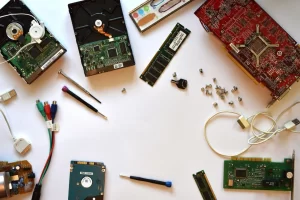What is the Best Technology?

Technology has become an essential component of daily life. It helps us complete tasks more easily, connect with people globally and access information faster.
Are You Searching for Coding Tutorials or Thought-provoking Articles on Emerging Technologies? If so, here are a few top resources that are sure to satisfy your tech curiosity.
1. Artificial Intelligence (AI)
AI is the superior technology, as it helps improve efficiency and capabilities across many products. From virtual health assistants and shopping recommendations to warehouse automation systems, AI is improving technologies we rely on every day.
AI can reduce time needed for data-heavy tasks by processing large volumes of structured and unstructured information quickly. Companies recognize this advantage of investing in AI as a competitive edge and invest in it accordingly.
Leading AI models have become available as cloud services. OpenAI provides numerous large language models tailored specifically for chat, natural language processing and image generation; hardware providers like Nvidia offer foundational AI infrastructure and compute-intensive ML algorithms available across major cloud centers – making AI accessible to businesses of all sizes. These models make AI accessible.
2. Machine Learning (ML)
Machine learning (ML) is one of the fastest-evolved technology fields, with new breakthroughs seemingly occurring every day. ML applications range from photo tagging on social media sites like Instagram to analyzing medical radiology images and even real time identification of fraudster transactions.
Not surprisingly, machine learning (ML) has quickly become one of the most sought-after technologies, as it provides an effective means of uncovering hidden patterns in data and creating predictive applications. Unfortunately, however, its implementation requires significant resources.
Python is an increasingly popular machine learning language with an ecosystem of libraries to enable easy access to algorithms. NumPy provides data manipulation functions while Matplotlib is often used for visualizing models. Furthermore, TensorFlow and PyTorch offer various solutions for building neural networks.
3. Virtual Reality (VR)
Virtual Reality (VR) creates an engaging experience in which users can immerse themselves into an imaginary three-dimensional environment through sight, sound and touch. Popular among gamers and tourists alike, but also used widely in healthcare, military services and businesses – Virtual Reality has numerous applications beyond entertainment!
VR may seem like something from the future, but its roots stretch back decades. VR’s roots can be traced to the Sensorama machine created in the mid 1950s.
VR can assist first responders and heavy equipment operators practice dangerous situations without risking injury. Automobile manufacturers also utilize VR for vehicle design testing before expensive prototyping begins, while businesses use it to provide their customers with realistic product experiences that build brand loyalty. But VR technology does present its own set of challenges.
4. Robotics
Robotics is an engineering discipline focused on designing machines that mimic or surpass human actions, and has applications across various fields including healthcare, agriculture, transportation and more.
Robots can work tirelessly without tiring themselves out and can perform tasks more quickly and precisely than humans, helping increase productivity, efficiency and potentially lower costs.
Robots are being increasingly utilized to assist space exploration, hazardous missions, manufacturing processes, motion planning/control and natural language processing (NLP). Furthermore, AI, machine learning, and other technologies are being combined into more intelligent and versatile robots that are being developed specifically to assist manufacturing operations and other industry processes. Robotics has even become a crucial tool in motion planning/control technology applications for manufacturing operations – both of which would otherwise be dangerous or impossible for humans to accomplish on their own. Furthermore, robots are being created that use machine intelligence combined with AI/ML technologies for manufacturing processes in terms of manufacturing/other industries processes as well as natural language processing (NLP), motion planning/control capabilities as well as motion planning/control capabilities enabling robots to understand and respond appropriately while motion planning/control capabilities to help automate manufacturing/other industry processes; in particular for manufacturing/other industry processes including AI/ML technologies to produce intelligent and versatile robots capable of understanding human speech as well as motion planning/control purposes.
5. The Internet of Things (IoT)
IoT (Internet of Things) refers to an interconnected network of devices which communicate among themselves and with their environment, providing more efficient operations and opening up new opportunities.
Smart watches that track exercise, smart home devices that manage heating and lighting, security systems that notify us when someone approaches our doors – these technologies and more make up IoT, revolutionizing our lives while raising numerous ethical questions.
IoT sensors in healthcare environments can monitor patient conditions remotely and relay that data directly to doctors, while in business it helps automate processes, increase efficiency and safety, accelerate product development/maintenance efforts, as well as bring customers new services.









